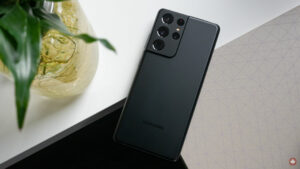
The post Samsung Galaxy S21 Ultra Review: Redemption story appeared first on MobileSyrup.

Last year’s Galaxy S20 Ultra was a clear miss for Samsung.
While the phone boasted impressive specs, 100x ‘Space Zoom’ turned out to be a gimmick, focusing was slow, and the pricey smartphone’s camera bump was a grotesque island that looked like it was awkwardly glued to its rear.
With the Galaxy S21 Ultra, Samsung has a lot to prove. The main question surrounding the device is if it solves the S20 Ultra’s most glaring issues. Thankfully, Samsung’s latest S series flagship accomplishes this for the most part.

Camera performance and focusing speed are improved significantly across the board. The new 10x optical zoom functionality is great, and thankfully, Samsung has finally found a way to make the S21 Ultra’s massive camera bump look more seamless and even better than the Note 20 Ultra’s.
Still, even with a minor price drop, $1,649 is an expensive starting price for any high-end smartphone. That said, just like Apple’s iPhone 12 Pro Max, if you’re an Android user that needs the absolute best smartphone available, there’s a lot to like about the Galaxy S21 Ultra.
Note: This review only focuses on Samsung’s Galaxy S21 Ultra. MobileSyrup will have reviews for the Galaxy S21 and Galaxy S21+ in the coming weeks.
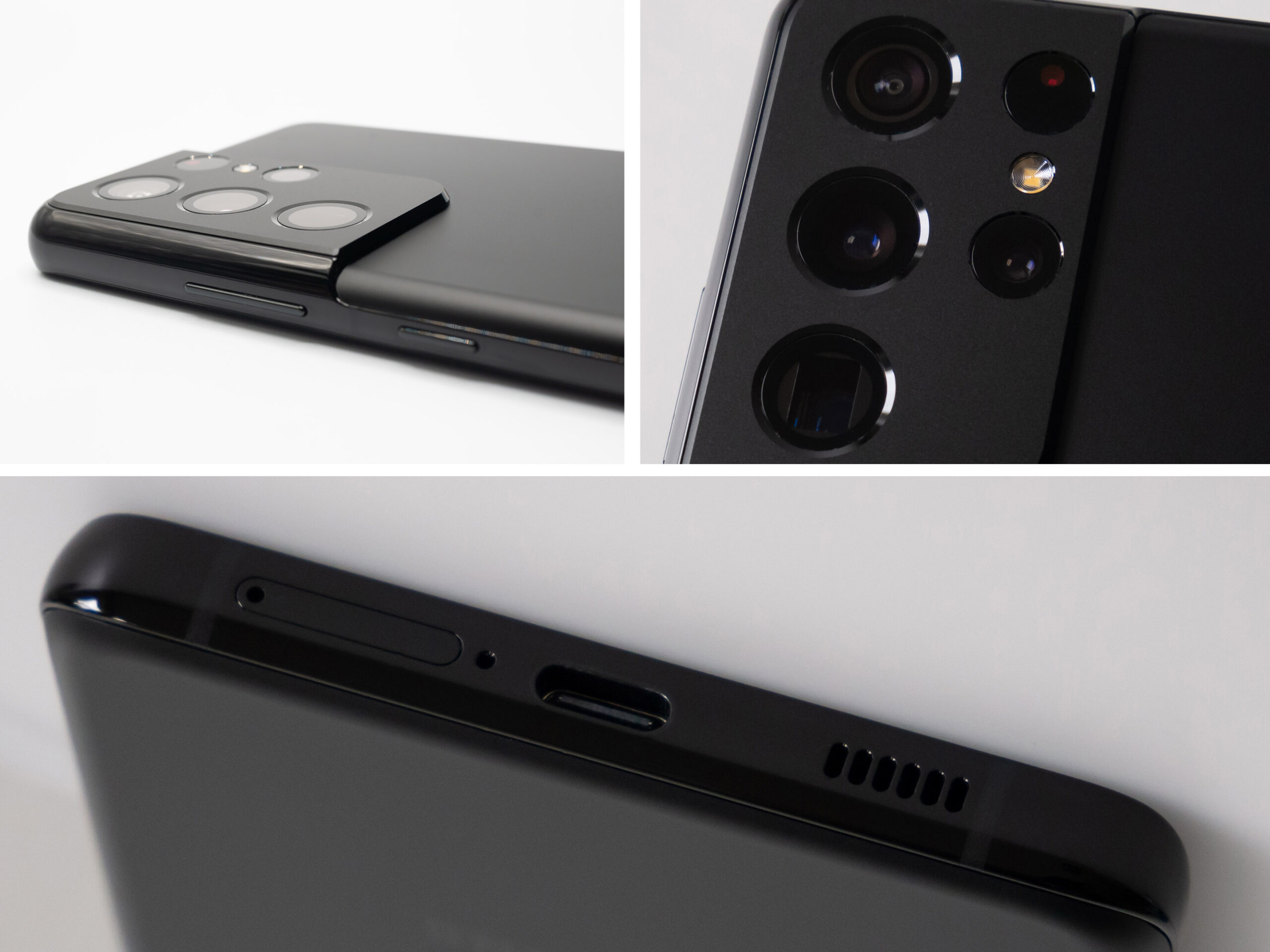
The S20 Ultra wasn’t an ugly phone; in fact, I’d say it’s overall pretty sleek-looking. However, the S21 Ultra solves one of my main complaints about the S20 Ultra’s design: the camera bump.
This year, Samsung has redesigned the shooter array across the entire S21 line with a new ‘contour cut camera.’ This means the camera bump no longer looks like it was hastily slapped on the back of the smartphone and instead features a wraparound edge that seamlessly blends with the device’s top left corner.
Though this design tweak is less noticeable on the S21 and S21+, given that the camera bump is smaller, it makes the S21 Ultra’s sizable bump blend in far better with its already great design. It also helps the S21 Ultra stand out in a sea of very similar-looking phones. If you were hoping that this would be the first Samsung device in years actually to sit flat on a table with the lens down, you’ll be disappointed to hear that isn’t the case. The S21 Ultra still rocks back and forth like a smartphone-sized seesaw, just like its predecessor.
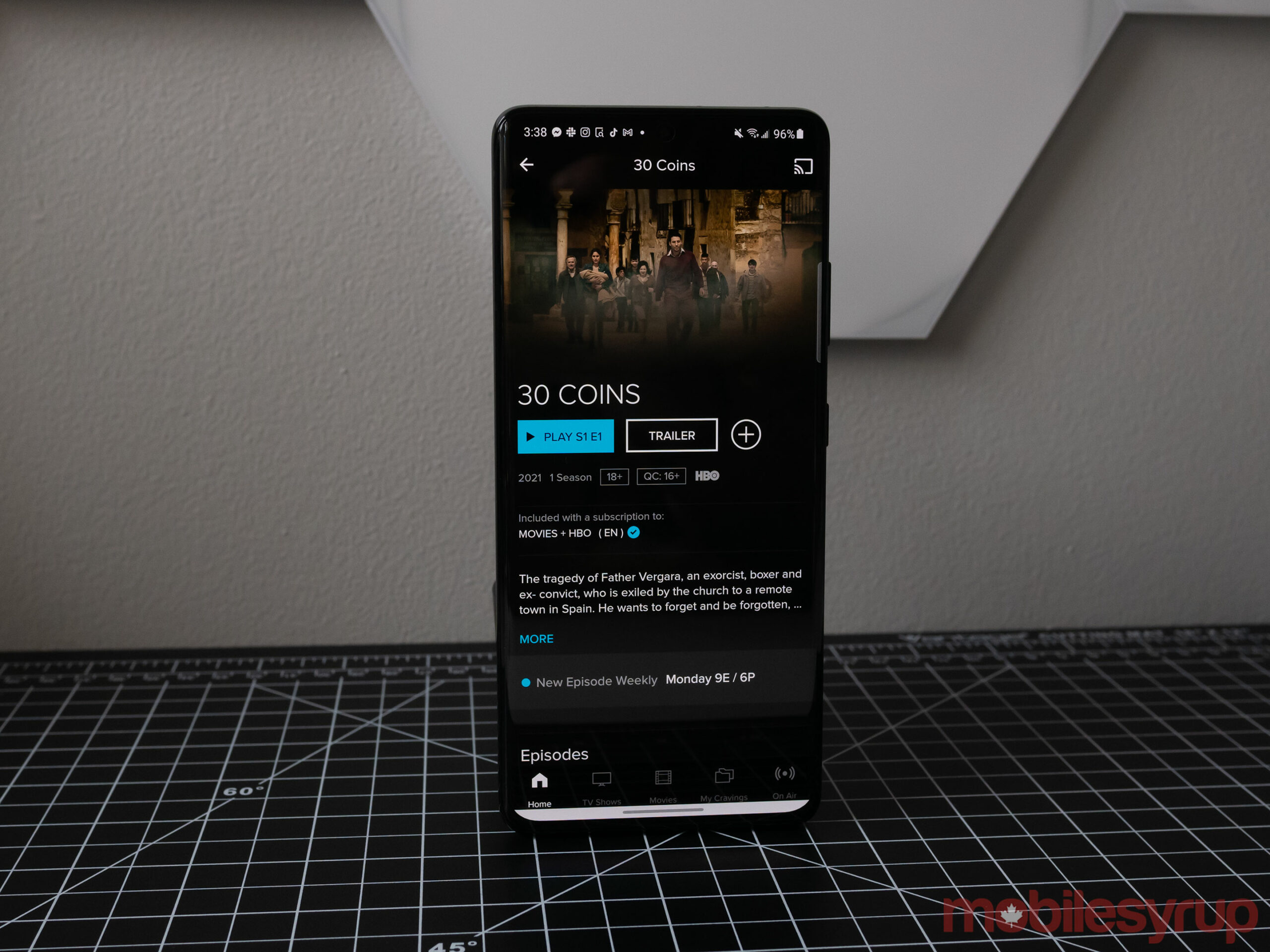
The metal frame running around the entire circumference of the S21 Ultra makes the phone feel substantial and helps give the device much-needed extra grip, which is great because of how big it feels. The subtle curve to the display also returns, unfortunately. I don’t necessarily have anything against curved screens, but I often find they result in more frequent accidental screen presses, especially with Samsung’s devices. Thankfully, the curve seems to be slightly more subdued this year compared to the S20 Ultra’s.
It’s also worth noting that the S21 Ultra feels noticeably heavier than the S20 Ultra, coming in at 227g vs 222g. Overall, this really isn’t a smartphone for those who prefer smaller, lighter devices — the Ultra is undeniably a very ‘big boi.’ With that in mind, I find the S21 Ultra easier to hold than the iPhone 12 Pro Max because of its sloped edges, which measures in at a very similar 6.7-inches.
Regarding colours, this year we’re getting ‘Phantom Black,’ a hue Samsung placed almost hilarious emphasis on during its recent Unpacked event, and ‘Phantom Silver,’ which seems to shift colours slightly depending on the light it’s under.
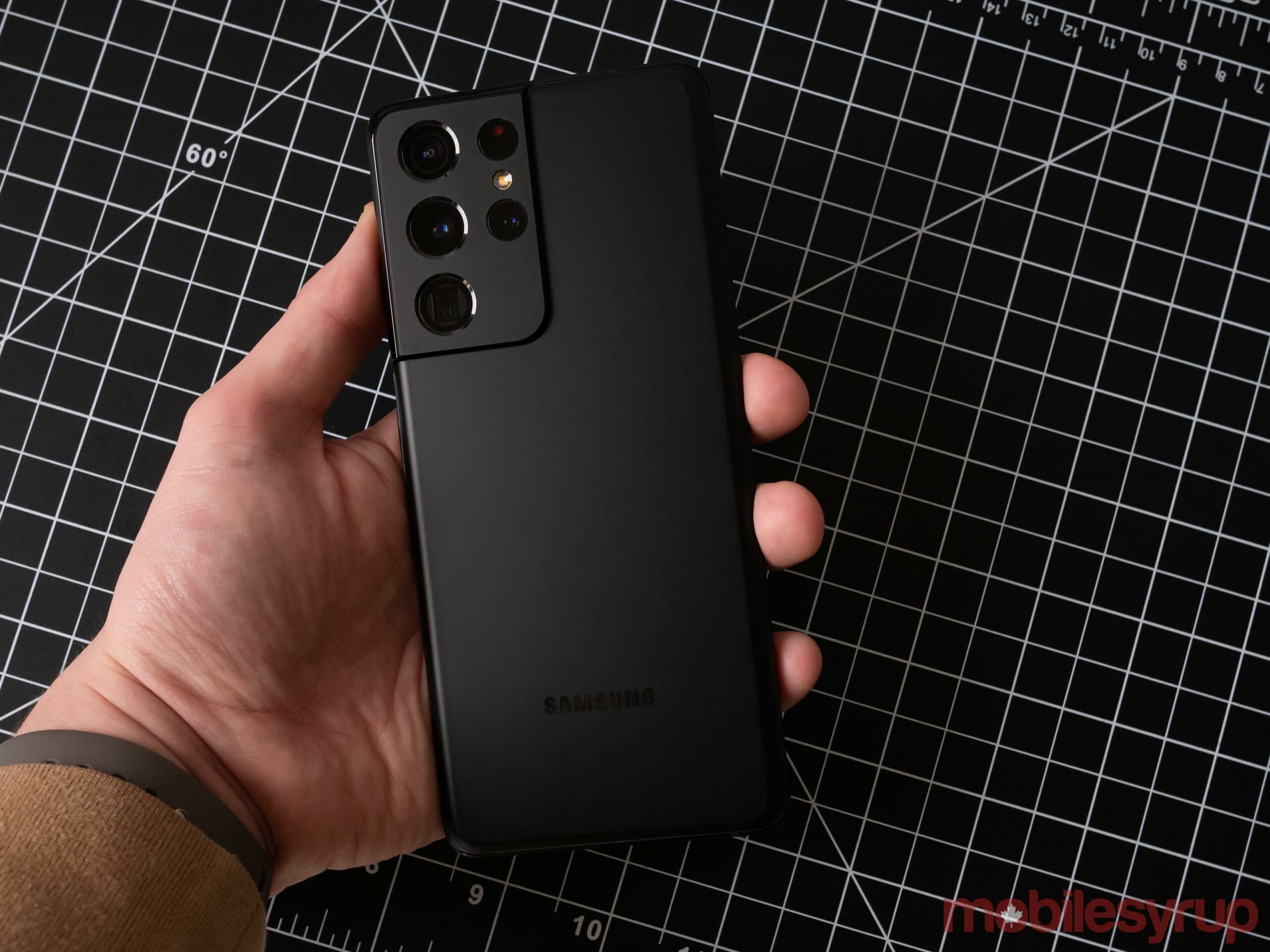
The Phantom Black S21 Ultra looks great, but it’s an intense black, as you can tell from the pictures in this review. This means it shows fingerprints, dust and smudges around its camera bump rather easily. On the plus side, the Gorilla Glass Victus rear features a matte texture that helps alleviate this.
Overall, the S21 Ultra is one of the most stunning smartphones Samsung has ever released, and a true return to the design prowess the tech giant is known for.
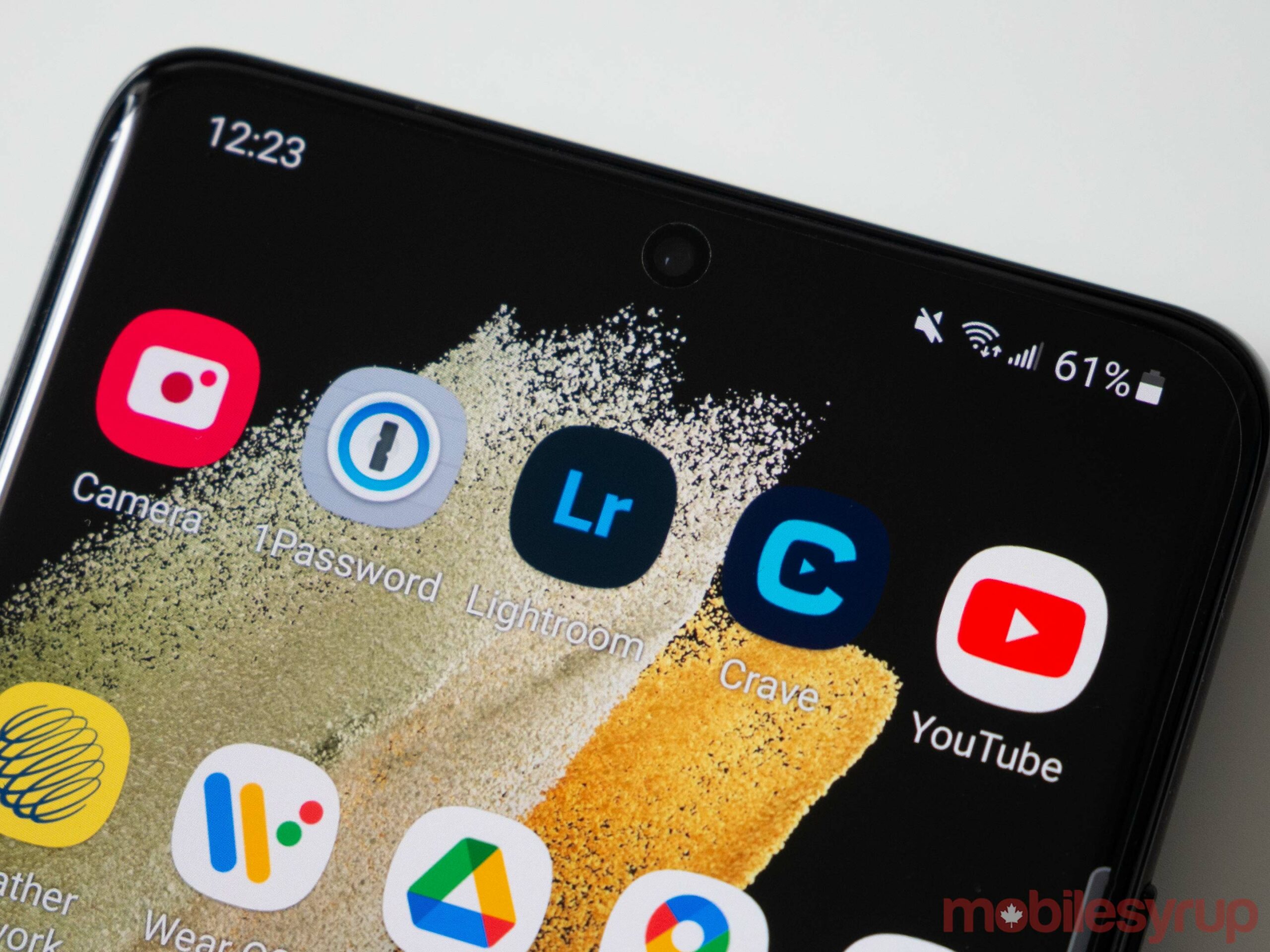
Along with the adaptive refresh rate technology from the Note 20 Ultra that ratchets up to 120Hz when doing things like playing a game and goes down to as low as 10Hz to save battery life when performing a simple task like texting, the S21 Ultra is also the first Samsung device capable of 120Hz at a 3200 x 1440 pixel resolution (WQHD+).
The results are extremely impressive; seriously, I don’t think I’ve ever seen a display look this smooth. Everything from watching Netflix, browsing the internet, and even just scrolling aimlessly through TikTok as I attempt to avoid the modern hellscape that is the current state of the world is a joy with the S21 Ultra.
Thankfully, the adaptive refresh rate seems to have also improved the S21 Ultra’s battery life significantly, especially when the smartphone is set to WQHD+. I easily get through an entire day of casual use, including a few hours of watching videos, scrolling through social media, and browsing the web. The size of the Ultra’s battery remains the same as last year’s S20, coming in at 5,000mAh.

Of course, given Ontario’s current stay at home order, my battery testing was primarily done at home while connected to Wi-Fi. There’s a possibility running the S21 Ultra entirely on data could negatively affect battery life, but I don’t expect there to be a significant change.
As has become expected with Samsung’s smartphones, the S21 Ultra’s HDR10+ capable display looks great. It features industry-leading contrast, vibrant colour and, this year, a slightly increased peak brightness rating of 1500 nits.
For those that place stock in benchmarks, you’ll be pleased to know that Qualcomm’s Snapdragon 888 offers a substantial on-paper leap over the Snapdragon 865. For example, the S21 Ultra measures in at 3,411, compared to 2,644 for the S20 Ultra, and 1,108 for single-core compared to 800 for the S20 Ultra. In practice, this means that performance-wise, my time with the Galaxy S21 Ultra has been nearly flawless. I haven’t encountered a single instance of slowdown or any app crashes in roughly one week with the smartphone.

Other specs include Android 11, Wi-Fi 6E, Samsung’s surprisingly clean One UI 3.1, 12GB of RAM in the 128GB/256GB version of the device, and 16GB of RAM in the 512GB iteration. The S21 Ultra Samsung sent me to review is the 16GB variant, and in my experience, multi-tasking was an absolute breeze, just like nearly every Samsung device I’ve used over the past few years. The S21 Ultra also features an ultrasonic in-display fingerprint sensor that seems to perform identical to its predecessor, despite being slightly larger than the one included in the S20 Ultra.
It’s also worth noting Samsung has lowered the resolution in both the S21 and S21+ to 2400 x 1080 pixels. So, if you’ll miss the additional pixels featured in the S20 series, the Ultra is your only option this year.
“…if you plan to hang on to the S21 Ultra for an extended period of time — and if you’re dropping this much on a smartphone, you really should be — 5G will be more of a gamechanger in the coming years.”
There’s no microSD card slot this time around, which will likely be a significant point of contention for some long-time Samsung S series fans. I’ve never had much use for the SD card slot and have typically found the lowest tier option for storage (this year, it’s 128GB) to be more than enough space for my purposes. Many people will see this as a step back, though, especially since Samsung really has no justification for ditching the much-loved port.
This year, the S21 Ultra once again supports 5G. While this futureproofs the smartphone, it doesn’t mean much for most Canadians and won’t result in a massive jump in network speeds. Still, if you plan to hang on to the S21 Ultra for an extended period of time — and if you’re dropping this much on a smartphone, you really should be — 5G will be more of a gamechanger in the coming years.
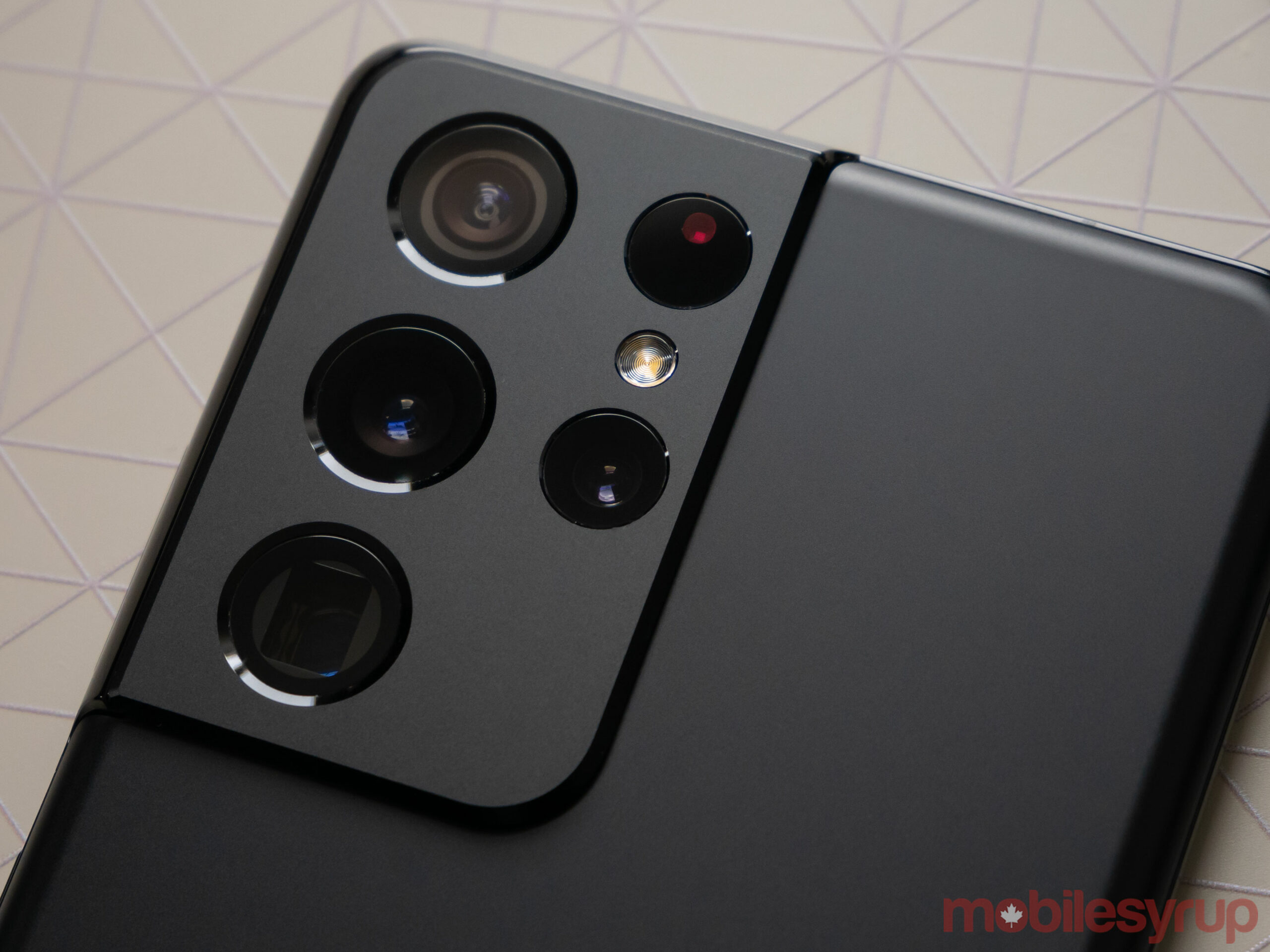
I’ve always viewed Apple’s high-end iPhones and Samsung’s flagship S series devices as offering the best smartphone camera performance available in the industry. Now that Apple is pushing low-light performance with the iPhone 12 Pro, Samsung seems to be taking things in a slightly different direction with the S21 Ultra.
First, I’ll lay out the array featured in the smartphone. On the back, there’s a 12-megapixel f/2.2 ultra-wide camera that doesn’t feature optical image stabilization (OIS), a 108-megapixel f/1.8 shooter with OIS, a telephoto lens with a 10-megapixel f/4.9 aperture with 10x optical zoom and OIS, and finally, a 10-megapixel f/2.4 lens with 3x optical zoom and OIS (this replaces the 48-megapixel f/3.4 telephoto lens featured in the S20 Ultra).
While the camera array is very similar to last year’s shooters, what’s notable is the addition of the 10x optical zoom lens. Though it’s somewhat difficult to get an image entirely in focus even with OIS, the S21 Ultra offers the best quality in this zoom range I’ve ever encountered.

10x optical zoom is impressive, but anything past 30x is blurry.
10x zoom is great for getting up close to a subject and quickly became far more useful than expected during my time with the device. Of course, when you push past 10x and get into digital zoom territory, the results are far less stellar. While 30x looks decent, past that mark, photos become blurry and un-postable. As expected, 100x ‘Space Zoom’ looks just as horrible as it did last year with the S20 Ultra, though it’s thankfully easier to keep steady this time around. The smartphone also utilizes digital zoom between 3x and 10x, but given the focal length isn’t that intense, it still generally looks good.
108-megapixel shots also return this year and look just as impressive as they did with the S20 Ultra. They’re still a bit of an oddity because it’s impossible to post an image of that size on any social media platform and still retain its quality. However, if you offload the photo to Photoshop CC or another image editing app and want to crop out a specific area, the massive size can potentially still be handy.

The S21 Ultra’s front-facing 40-megapixel camera performs identically to last year’s shooter. Unfortunately, this means the strange skin smoothing effect is still present.
The front-facing shooter in the ‘Infinity-O’ display cutout measures at 40-megapixels with an f/2.2 aperture. Performance seems on par with the S20 Ultra, including the weird face smoothing Samsung smartphones have become known for. Even with smoothness turned all the way down to one or two, the effect is still present. I’m aware some might like this feature, but I feel it gives skin a weird plastic-like texture.
Most importantly, compared to the S20 Ultra, Samsung’s revamped laser autofocus system is superbly snappy this year. The strange delay that often occurred when trying to snap a photo with last year’s Ultra is a thing of the past.

While all of the photos retain a significant amount of detail and generally look great, the balance Samsung has struck between kicking up the vibrancy while still retaining a somewhat realistic tone is impressive.
Finally, it’s important to look at how the S21 Ultra’s camera performance compares to recent smartphones, particularly the iPhone 12 Pro Max. Though the out-there, over-saturated look is still there, I find Samsung has turned the effect down slightly, even compared to the Note 20 Ultra. When looking at shots side-by-side, the S21 Ultra’s colour is far more subdued than the Note 20 Ultra’s but doesn’t feature the more muted, true-to-life tone offered by the iPhone 12 Pro Max’s main shooter.
Unfortunately, the 12-megapixel ultra-wide lens still seems to feature strangely saturated colours, especially with images featuring the sky. Overall, the S21 Ultra’s camera also tends to blow out highlights, especially when under low-light. This was also a problem last year, and it would have been great to see Samsung fix this issue. The over-saturated look of images is reduced when you turn off the smartphone’s AI-based photo enhancements, but photos still look exaggerated.

Night mode tends to lighten the entire picture and features an overall soft focus.
In general, I’d also give the win to Apple’s iPhone 12 Pro Max regarding low-light performance, even with the improved night mode taken into account. Images tend to feature slightly less noise and are generally sharper when shot with Apple’s flagship. The S21 Ultra also brightens the entire photo with night mode, often making it look like it was shot during the day.
Apple and Samsung have always approached photography differently, and, ultimately, what you prefer will come down to personal preference. Regardless, Samsung’s more balanced approach with the S21’s contrast and vibrancy is a great step forward for the company.
The Galaxy S21 Ultra is also capable of shooting 8K video at 24fps just like the Note 20 Ultra. While a welcome new feature, there really isn’t anywhere to play 8K video natively right now unless you own a television that supports the resolution. Even then, you’d need to find a way to actually play the content on your TV. Most people are better off shooting video at 4K 60fps, which is now possible with all of the smartphone’s cameras.
The new ‘Director Mode’ that displays small windows for each angle of the S21 Ultra’s lenses live while shooting video is really useful, though.
Another interesting new feature is 12-bit HDR and 12-bit RAW photo files. Images shot in this format feature less colour noise and seem to be Samsung’s answer to Apple’s ProRAW format. Just like Apple’s take on RAW images, this is only something serious photographers will care about — and if you’re really that serious, you likely already own a more capable DSLR.

My quality of my penmanship is similar to that of a 5-year-old’s
Samsung also brought ultra-wideband support to the S21 Ultra, and while it doesn’t do much yet (similar to Apple’s iPhone 12 devices), it could eventually be used as a car key for a specific vehicle and feature compatibility with the SmartTag, allowing for more accuracy when you’re searching for an item.
Just like the Note 20 Ultra, Samsung has also dropped the S21 Ultra’s fast-charging down to 25W from its predecessor’s 45W charging. This could have something to do with the fact that the S20 Ultra only shipped with a 25W charger in the box and required the purchase of a 45W charger to take advantage of the additional speed. Overall, this doesn’t make much of a difference in charging speeds but is still worth noting. When using a fast charger, I was able to get a 50 percent charge in roughly 30 minutes and a full charge in about an hour.
“…it’s unlikely many people will take advantage of the S21 Ultra’s S Pen support”
What’s more disappointing is Samsung has followed Apple’s lead and ditched including a charging brick in the box or wired headphones. I understand the environmental claims tech giants make regarding this decision, but I can’t help but feel like it has more to do with cutting costs given the price of 5G chips and smaller overall packaging. When you’re dropping a minimum of $1,649 on a smartphone, you expect it to include everything you need in the box.

21/01/2021 04:00 PM
21/01/2021 09:43 PM
21/01/2021 11:11 PM
21/01/2021 03:29 PM
21/01/2021 01:05 AM
21/01/2021 02:56 PM
21/01/2021 12:02 PM
21/01/2021 04:01 PM
21/01/2021 02:06 AM
2014 © Canadian apps and news